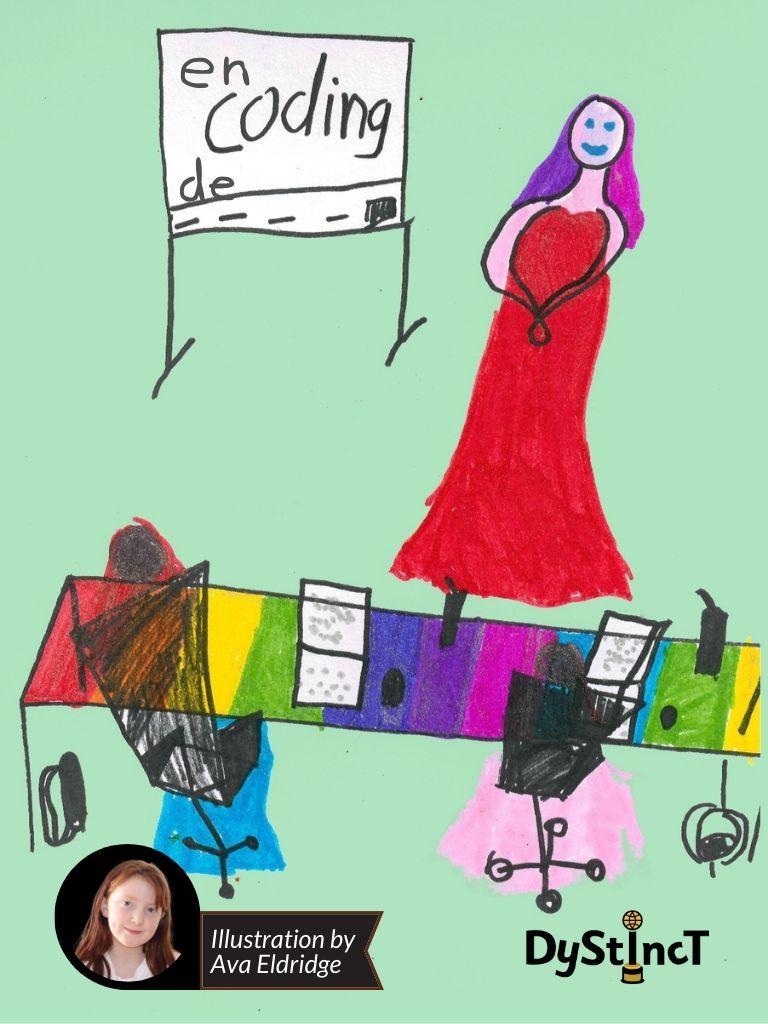
Issue 17: Dyslexia-Inclusive Education: Comprehending the Linguistic Code | Jenny Gray
Jenny Gray underlines the importance of understanding the linguistic code in English and French and advocates pattern-based instruction, incorporating interactive methods for improved decoding and encoding skills.
According to research, the definition of Inclusive Education states that all students, regardless of any challenges they may have, are placed in age-appropriate general education classes that are in their own neighborhood schools to receive high-quality instruction, interventions, and supports that enable them to meet success in the core curriculum (Alquraini & Gut, 2012).
For us to define a dyslexia-inclusive classroom, we need to identify the needs of the child.
Typically, the primary characteristics of dyslexia are as follows:
Poor decoding: Difficulty accurately reading (or sounding out) unknown words; Poor fluency: Slow, inaccurate, or labored oral reading (slow reading rate); Poor spelling: Difficulty with learning to spell, or with spelling words, even common words, accurately (Characteristics and Signs of Dyslexia, n.d.-b).
So, how do we remedy this?
So, how do we remedy this?
Language is comprised of reading, writing, speaking and listening skills. Speaking and listening skills are sound-based communicative tools. The letters just tell you what sound to make to decode (say and interpret) the message. Reading and writing are text-based communicative tools. The letters just tell the reader the encoded meaning of a word. Different letter combinations create different meanings.
In the French language classroom, the target language should be the instructional language, so screening and assessment should be conducted in the French language. From a linguistic perspective, we need to explicitly teach five key areas:
- the oral sounds of the language (phonology)
- the written coding linked to sounds of the language (phonetics),
- how to build words (morphology),
- sentence structure (syntax), and
- develop the ability to derive meaning from sentences (semantics).
But if our child is dyslexic, aren't we going to have struggles with decoding and fluency as defined above?
Well, let us take a tangent. Math is French, and French is math. Math is pattern-based. All the numbers have certain rules they follow, and typically, the foundational patterns of behaviour are the essence of all high-order math in later grades. Math can be broken down into easy steps, but the foundation needs to be explicitly taught for later success. For example, what is 90% of $50? Seems challenging, but if we break it down into simpler math, we can obtain the answer quickly and easily every time. To quickly determine the answer, simply multiply 9 x 5 = 45. That's the answer. You don't need a calculator or get frustrated if you know basic math skills. That's the trick.
Language instruction is also based on patterns. The letters all have a nature and function. The nature of the letter is how the letter behaves, and the function is the sound that it makes. Different combinations of letters create different sounds.
When we explicitly teach the code, we teach that decoding and encoding are the skills for successful language and reading acquisition. Decoding is the ability to take the word apart using phonetic patterns, while encoding is the reciprocal of building words through spelling patterns. We can be inclusive as dyslexics can visualize, see the big picture and are great at patterns. (Dyslexia Information, n.d.)

Now, English patterns differ from French. The French language has a typical rhythmic pattern. There are consistent digraphs (two letters that make one sound) with limited exceptions. So, teach the pattern. For parents, the consonants between the two languages will mirror each other except for the main four: "th", "ch", "gn", and "qu". The other subtle differences in sounds are consonant rules, such as if "s" is between two vowels, then "s" becomes a /z/ sound. Those are fine-tuning teachable moments with educators in reading aloud and pronunciation.
Morphology is the smallest unit of meaning in the code. Well, when teaching the sounds of the language, you are also teaching morphology. For example, in teaching students that in French, "er" makes the sound /ay/, you also teach that when "er" is found at the end of words, it indicates that it is the infinitive of a verb or it is an adjective which describes a noun. This is the nature and function of "er".
This leads to a conversation about syntax: The how of constructing sentences. This demonstrates the importance of building a vocabulary and identifying parts of speech. Again, nature and function of words. The nature of the word is determined by its spelling, and its function is the part of speech that the word represents. For example, an "er" verb, when conjugated with the ending "-ent", indicates a verb in the third person plural form.
This post is for paying subscribers only
SubscribeAlready have an account? Log in


